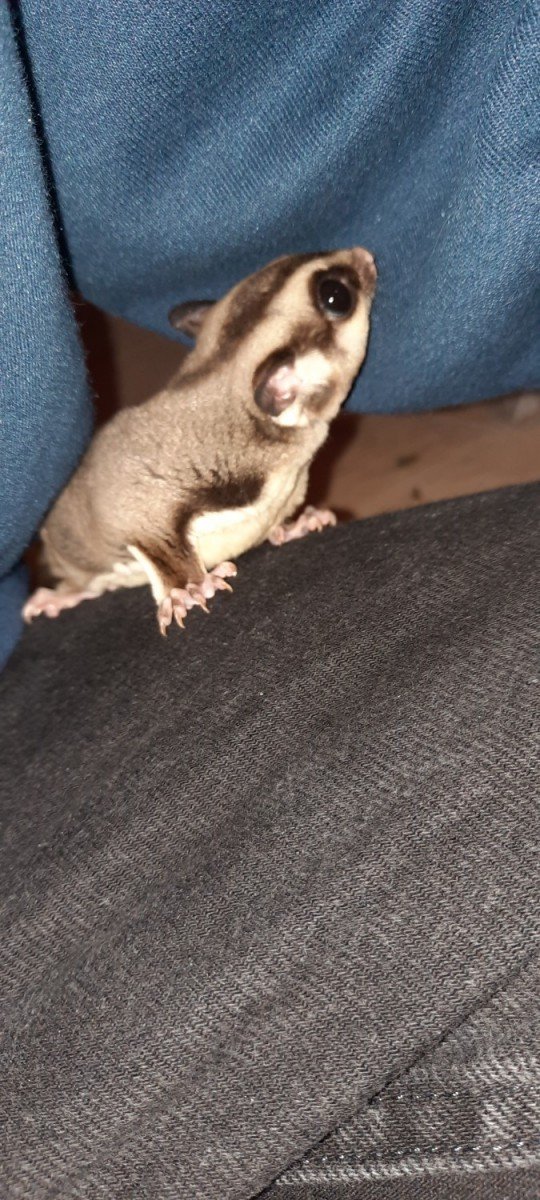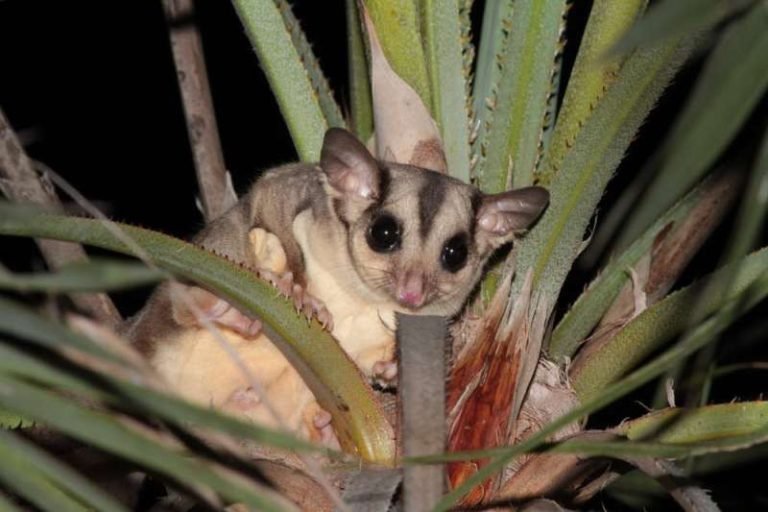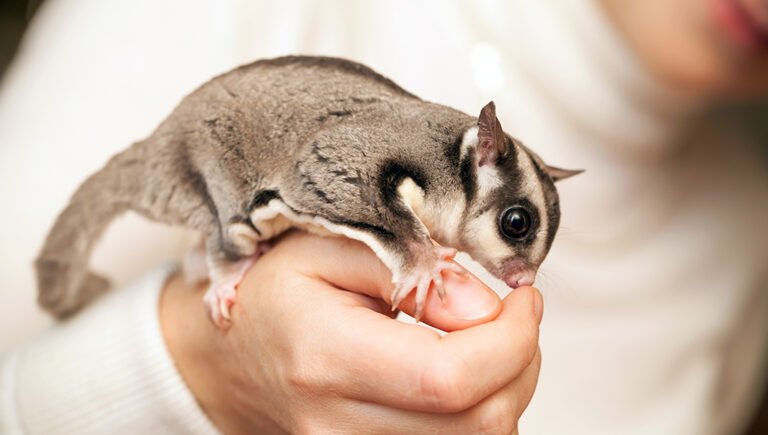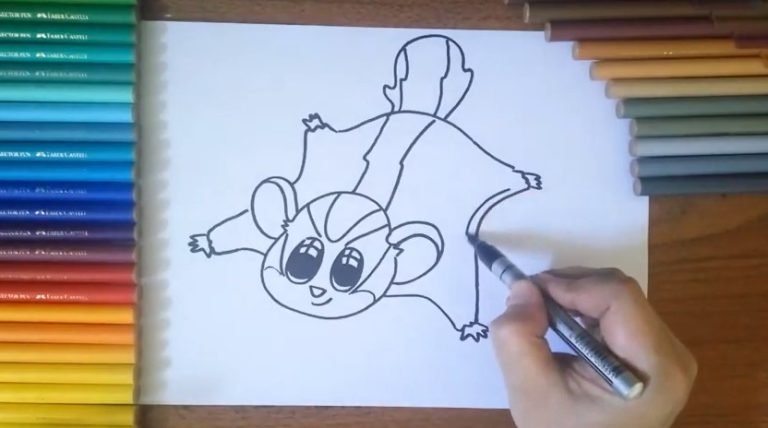Sugar Glider Bonding VS Socializing Key Differences
Are you curious about how to build a strong relationship with your sugar glider? Well, it’s time to uncover the key differences between bonding and socializing these fascinating creatures. Sugar gliders are social animals, but bonding and socializing are distinct processes that require unique approaches. By comprehending these differences, you can ensure the well-being of your furry friend.
Properly bonding or socializing with your sugar glider has a significant impact on their overall happiness. While bonding focuses on creating a deep emotional connection and trust between you and your glider, socializing involves introducing them to other gliders or humans for companionship. Understanding which approach to take in different situations is crucial for fostering a healthy bond or facilitating positive interactions.
So, let’s dive into the world of sugar gliders and explore the nuances of bonding versus socializing. With this knowledge, you’ll be well-equipped to navigate the intricacies of building a strong relationship with these adorable creatures.
Now, let’s embark on this exciting journey together!
Key Differences Between Sugar Glider Bonding and Socializing
Bonding with your sugar glider and socializing them are two distinct approaches to building a relationship with these adorable creatures. Here’s a breakdown of the key differences:
- Bonding focuses on creating a deep emotional connection with your sugar glider: When you bond with your sugar glider, you invest time and effort into developing a strong emotional bond. This involves activities that build trust, such as gentle handling, offering treats, and spending quality time together. The goal is to establish a close and affectionate relationship between you and your glider.
- Socializing involves introducing them to other gliders or humans: On the other hand, socializing aims to make your sugar glider comfortable in various environments by exposing them to different individuals or fellow gliders. This can include supervised playdates with other gliders or gentle interactions with trusted humans.
- Bonding requires time, patience, and trust-building activities: Building a bond takes time and dedication. You need to be patient while allowing your sugar glider to adjust at their own pace. Trust-building activities like hand feeding, gentle stroking, or carrying them in a bonding pouch help foster a sense of security.
- Socializing involves providing opportunities for interaction with others: To socialize your sugar glider effectively, create opportunities for interaction outside their comfort zone. Introduce them gradually to new people or other friendly sugar gliders in controlled environments where they feel safe.
- The goal of bonding is to establish a strong bond between you and your sugar glider: Bonding focuses on nurturing an emotional connection that goes beyond basic interaction. It aims to create trust, love, and mutual understanding between you and your furry friend.
- Socializing aims to help them feel comfortable in various environments: Socialization helps your sugar glider become accustomed to different situations so they can adapt well when exposed to new experiences or surroundings.
By understanding the differences between bonding and socializing, you can choose the approach that best suits your sugar glider’s needs and personality. Remember, each glider has unique preferences and personalities, so tailor your interactions accordingly to ensure a healthy and fulfilling relationship.
Effective Ways to Bond with a Sugar Glider
Building a strong bond with your sugar glider is crucial for creating a lasting and meaningful relationship. Here are some effective ways to foster that connection:
Spend quality time together
Carrying your sugar glider in a bonding pouch or on your shoulder is an excellent way to spend quality time together. This physical closeness allows them to familiarize themselves with your scent and presence, promoting trust and comfort.
Offer treats as positive reinforcement
During bonding sessions, use treats as positive reinforcement to create positive associations. Sugar gliders have a sweet tooth, so offering their favorite snacks can help strengthen the bond between you. It’s like giving them little rewards for being close to you!
Engage in gentle playtime activities
Engaging in gentle playtime activities can be incredibly beneficial for bonding with your sugar glider. Try tickling their feet or softly stroking their fur while they are perched on your hand or shoulder. This not only provides sensory stimulation but also shows them that you enjoy spending time together.
Remember, building a bond takes time and patience. Each sugar glider has its own unique personality, so it’s important to adapt these techniques based on their preferences and comfort levels. By consistently implementing these methods, you’ll pave the way for a strong and trusting relationship with your adorable sugar glider companion!
Tips for Successful Sugar Glider Bonding

Start the bonding process gradually
Allow your sugar glider to explore its new environment at its own pace. This helps them feel comfortable and secure in their surroundings. Give them time to adjust and familiarize themselves with their new home.
Create a safe space
It’s important to establish a safe space where your sugar glider feels secure during bonding sessions. Set up a cozy area with soft bedding, toys, and hiding spots. This allows them to retreat if they feel overwhelmed or anxious.
Use soft, soothing tones
When interacting with your sugar glider, use gentle and calming tones of voice. This can help build trust and create a positive association with your presence. Speak softly and reassuringly as you spend time together.
By following these tips, you can facilitate a successful bonding experience with your sugar glider. Remember to be patient and understanding throughout the process as each glider is unique in their own way.
The Importance of Slow Introductions for Bonding
Introducing your sugar glider to new experiences gradually is key to successful bonding. It’s important to ensure that each step is met with comfort and acceptance from your furry friend. By taking the time to introduce new things slowly, you can build a strong bond based on trust and understanding.
During the bonding process, it’s crucial to avoid overwhelming situations that may cause stress or fear for your sugar glider. This can be done by carefully monitoring their reactions and adjusting the pace accordingly. Pay close attention to their body language, as it will provide valuable cues about their comfort level.
By giving your sugar glider much time and space to adjust, you can minimize any potential harm during the bonding process. Rushing the introduction or pushing them into unfamiliar situations too quickly can lead to negative experiences that hinder the bonding progress.
Remember, every sugar glider is unique, and what works for one may not work for another. Patience is key. Take the time to understand their individual needs and preferences, allowing them to set the pace for the relationship.
Housing Arrangements for Socializing Sugar Gliders
To ensure the well-being and socialization of your sugar gliders, it’s crucial to provide them with suitable housing arrangements. Here are some key considerations:
- Spacious Enclosure: Offer a roomy cage or enclosure that allows socializing sugar gliders to move around freely. This gives them the space they need to exercise and interact with their surroundings.
- Enrichment: Include plenty of toys, climbing structures, and hiding spots in the cage. These additions not only keep your sugar gliders entertained but also encourage social interaction among them. Consider adding items like ropes, branches, tunnels, or hammocks for added stimulation.
- Group Dynamics: Sugar gliders are naturally sociable creatures. To promote their natural social behaviors, consider housing compatible sugar gliders together. Introducing new gliders to an existing group can create a sense of companionship and prevent loneliness.
- Quarantine Period: Before introducing new sugar gliders into an established group, it’s essential to follow a quarantine period. This helps prevent the spread of any potential diseases or parasites among the animals. During this time, keep the new glider(s) in a separate cage within close proximity to allow visual and olfactory contact without direct physical interaction.
By following these guidelines for housing arrangements, you can create an environment that fosters socialization and bonding among your sugar gliders. Remember to provide enough space, enrichment options, and consider grouping compatible individuals together for optimal results in promoting healthy social behaviors among these adorable pets.
Keep in mind that each owner’s situation may differ slightly based on available space at home and individual preferences.
Final Thoughts
Mastering the art of sugar glider bonding is essential for creating a strong and lasting connection with these adorable creatures. By understanding the key differences between sugar glider bonding and socializing, you can ensure that you are providing the right environment and interactions to foster a deep bond with your furry friend.
To effectively bond with a sugar glider, it is important to follow some tips for success. Slow introductions are crucial, allowing your glider to adjust at their own pace and build trust gradually. Creating suitable housing arrangements that promote socialization is also vital in ensuring their overall well-being.
Remember, patience is key. Building trust takes time, but the rewards are immeasurable. Spend quality time with your glider, engage in activities they enjoy, and provide a safe and nurturing environment.
By implementing these strategies and techniques, you can forge a strong bond with your sugar glider that will bring joy and companionship for years to come.
FAQs
1.How long does it take to bond with a sugar glider?
The bonding process varies from one sugar glider to another. It may take weeks or even months before your glider fully trusts you. Patience is essential during this journey.
2.Can I bond with multiple sugar gliders at once?
Yes, it is possible to bond with multiple sugar gliders simultaneously. However, it requires extra effort and attention as each individual has unique needs and personalities.
3.What if my sugar glider doesn’t seem interested in bonding?
Some sugar gliders may be more reserved or cautious than others. Give them space when needed but continue offering gentle interactions over time. Consistency is key in building trust.
4.Are there any specific activities that help strengthen the bond?
Yes! Activities such as carrying your glider in a bonding pouch, offering treats, and engaging in interactive playtime can help strengthen the bond between you and your sugar glider.
5.Can I bond with a rescued sugar glider?
Absolutely! Rescued sugar gliders may require extra patience and understanding due to their previous experiences. With time and care, they can form deep bonds just like any other sugar glider.







